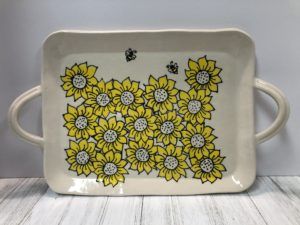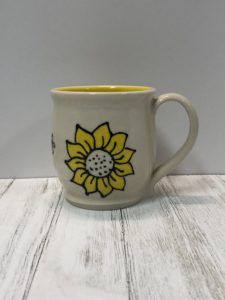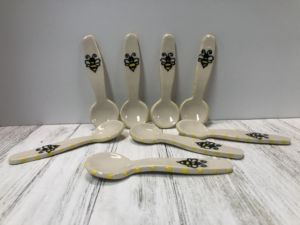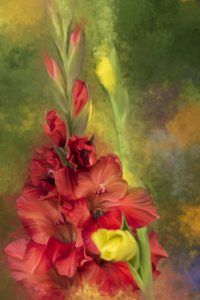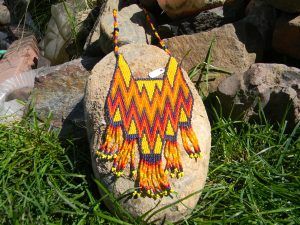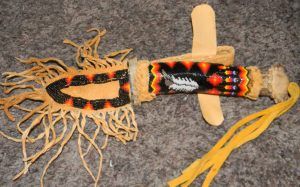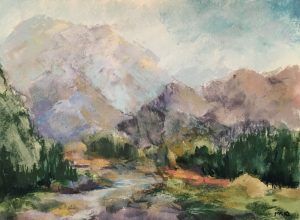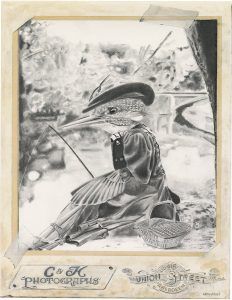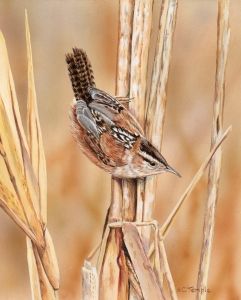Illusion Baskets — Woodturning Art by Louis Toweill

It looks like a woven basket, but is actually a painted, woodturned bowl. Aqua Terra Cotta Illusion Basket by Louis Toweill
In the right hands, by the right people, for the right reasons, illusion is a delightful thing.
For instance, when it comes to a news story, illusion has no place. At. All. But when it comes to a block of wood, illusion turns a bowl into a basket that isn’t a basket at all.
“They’re called Basket Illusion Pieces,” says Louis Toweill, a woodworker who creates bowls, platters, vases, even pens turned on a wood lathe. “They are woodburned with a pyrography tool and embellished with acrylic paint. The results are single pieces of wood that appear to be woven beaded baskets.”

Toweill graphs out his designs on a software spreadsheet first, and then paints the pattern onto the cells of the bowl. Mountain Design Basket Illusion Woodturned Bowl by Louis Toweill.
Highly complex and time consuming, basket illusion pieces start out as bowls turned on a wood lathe. While the piece rotates, Toweill (whose name rhymes, appropriately, with bowl) shapes the horizontal grooves. Afterwards, he burns on the vertical lines, one ridge at a time, by hand with the pyrography tool. What results is a series of squares or cells covering the entire surface of the bowl. He then maps out a design for the piece, using a software spreadsheet as a form of graph paper.
Spreadsheet Design and Painted Wood
“I put in asterisks on the spreadsheet to mark the major elements of the design,” the Yakima, WA, artist explains, “and from that I start painting the cells on the actual bowl. You have to know exactly how many cells surround the piece (usually it’s 96), and then once you start painting, you have to be awful careful about counting — if you miss by one cell, you mess up everything. It’s very . . . well, the best word for that part of the process is trepidating. I don’t think that’s an actual word, but it describes the feeling exactly.”
Toweill, who started seriously creating woodturned art in 2000, had long been interested in illusion work but was daunted by the time required, as are many woodworkers, he adds. “A lot of people are interested in it, but don’t follow through because of that time factor,” he says. “I myself started an illusion piece way back in 2009, but set it aside. Finally, in 2020, I pulled it out and finished it.” Pleased with the design and feel of the finished piece, Toweill put aside his misgivings about the time factor and leaped into basket illusion.
“It’s very precise, but it’s also a little by the seat of your pants,” he observes.
Distilling Information
A member of the Mid-Columbia Woodturners, Toweill is receiving increasing requests from other woodworkers on the process. He is more than willing to share what he’s learned, he says; the problem is distilling so much information and actual work into the three-hours or so allotted for a presentation.
“It really is time consuming,” he says. “It’s hard to condense and fit it all in.”

The color of the wood itself, left unpainted, gives the illusion of woven straw in a basket. Two Blues Bowl by Louis Toweill
The resulting artwork, however, is worth it — a wooden bowl that mimics the feeling and look of a woven basket, creating a fusion of medium that is unique, original, and unexpected. Sycamore, maple, and walnut are three of Toweill’s favored woods with which to work, and while he does purchase material for his woodturning creations, he prefers to find someone who has a tree they are downing and glean.
“A friend of mine had a sycamore tree and I have made bowls from that. I’ll also use wood from my own yard. I’m always on the lookout for wood.
“It’s serious challenge obtaining seasoned hardwood thick enough to make a piece of art. But wood is a great medium since it is so pleasant to touch and is very workable. It’s fun to see what shapes can be made from each block of wood.”
Full-time Retirement Work
Growing up with a background in logging and road construction, Toweill first used a wood lathe in high school wood shop in the early 1960s, but never used a lathe again until he bought an old one in the 1990s. He replaced it with a new model in 2000.
Upon retirement (he worked as an electrical engineer for Pacific Power and Light until 1992, then taught mathematics and business courses at various colleges as an adjunct faculty member until 2013) Toweill immersed himself full time into woodworking art. He displays his work in various retail art galleries and at festivals, shows, and other sales events. Twice he has shown his art at the American Association of Woodturners national symposiums.
Each artwork, illusion piece or not, is as unique as the tree from which it derives, Toweill says, and while the skill of the artist is a major factor in the finished artwork, the wood itself has say in what it eventually becomes:
“There are innumerable numbers of tree species to work with, and each piece has its own unique grain pattern and color. One never knows what pattern will be revealed while turning.
“The beauty of wood inspires me.”
And, he hopes, inspires others as well.
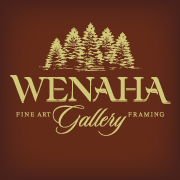 Louis Toweill is the featured Art Event at Wenaha Gallery from April 26 through May 23, 2022.
Louis Toweill is the featured Art Event at Wenaha Gallery from April 26 through May 23, 2022.
Contact the gallery, located at 219 East Main Street, Dayton, WA, by phone at 509.382.2124 or e-mail art@wenaha.com. Gallery hours are 9 a.m. to 5 p.m. from Monday through Friday, and by appointment. Visit the Wenaha Gallery website online at www.wenaha.com.









